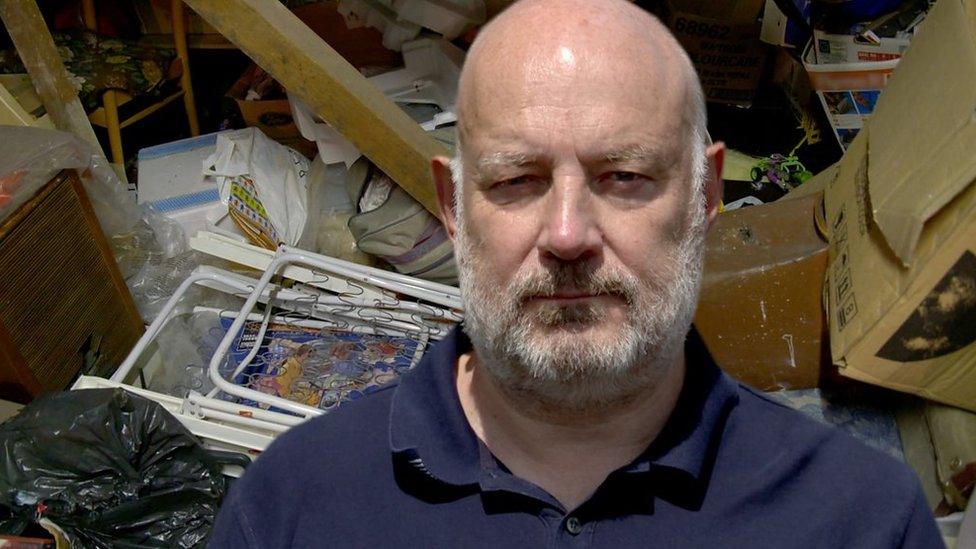The suffocating reality of life as a clothes hoarder
- Published

Laura Horton is planning to sell a large number of items from her hoard
A self-proclaimed hoarder who has filled every available storage space in her flat with designer clothes is turning her life around.
Laura Horton said her compulsion to buy high-end clothes was "suffocating".
She said there was "a lot of shame" around hoarding and wants to challenge the stereotypical view of a hoarder as "dirty and old".
"They're often presented as weird or strange and I don't think it's very helpful," she said.
Ms Horton, who is Plymouth Laureate of Words and an award-winning playwright, spoke about the disorder as she prepared to sell hundreds of items in a bid to gain back space in her spare room.
"Everybody's hoarding is different, it might be newspapers or books, or in my case, clothes," she said.
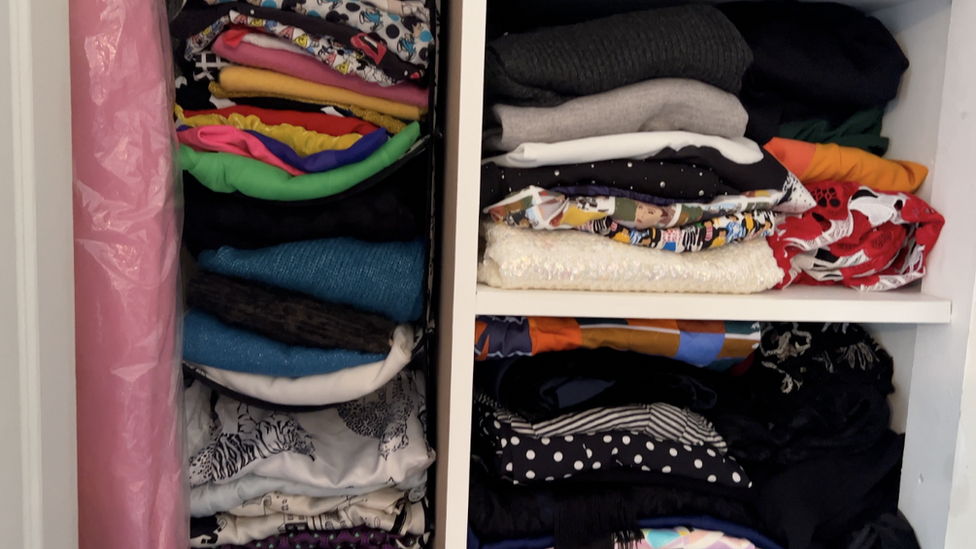
Ms Horton described the situation as "suffocating"
Ms Horton said the hoarding behaviour began when she was 26 after she moved to London from Devon.
"I got addicted to sample sales, being younger and growing up in Plymouth we didn't have a lot of money.
"It's when I realised you could pick up a Stella McCartney dress for £40."
Sample sales are events where designer items are sold at prices far lower than in stores.
Now 39, Ms Horton said the issue of hoarding had been "very suffocating".
"It was intrusive and hard and I probably looked more like a hoarder in that house in London than I do now in my flat in Plymouth.
"I don't want to live like this anymore."
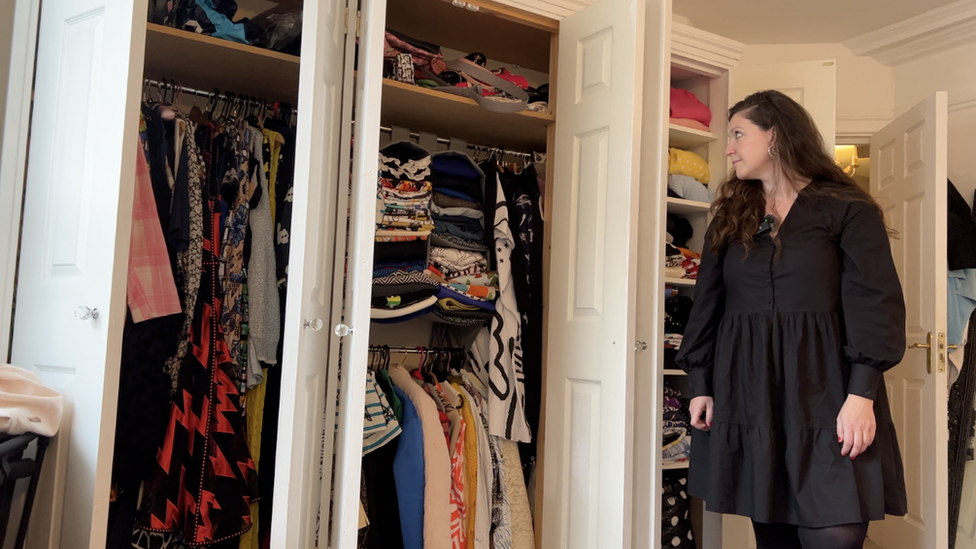
Ms Horton's clothes are packed tightly into wardrobes, cupboards, suitcases, boxes and under the bed
While she admitted she would often leave sample sales with "bags of clothes", Ms Horton said she never got into debt.
"I was finding things that were cheap or free, I would do PR in exchange for clothes - a lot of it was not costly to me in terms of money."
The suffocating reality of life as a designer clothes hoarder
Over time Ms Horton's clothing collection turned into what she said was well over a thousand items.
Her wardrobe is jammed full of clothes brands favoured by the rich and famous.
She has filled boxes, suitcases, large bags and even a stool with clothes.
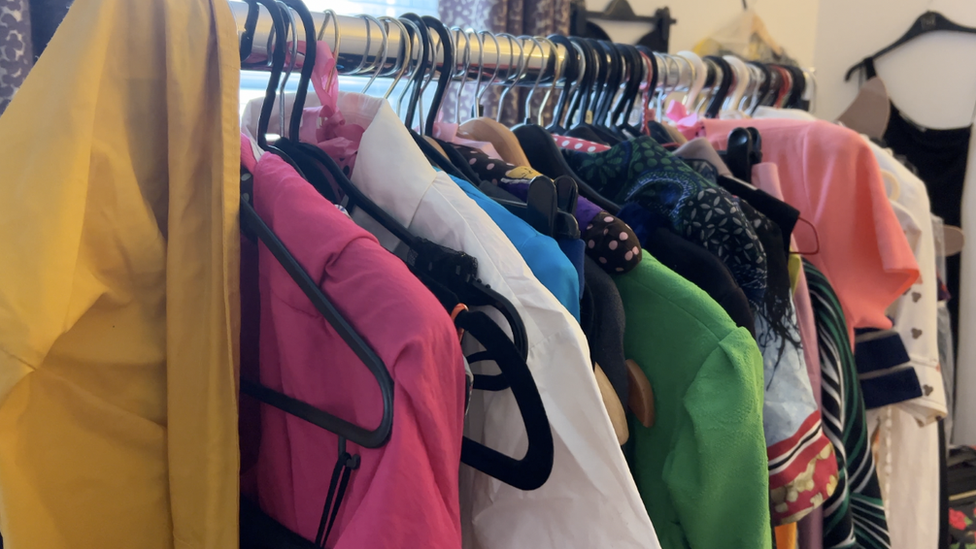
These are some of the items Ms Horton plans to sell
"It does affect me," she said.
"A lot of the time people don't see that as I don't necessarily invite people over when I'm crying or overwhelmed by all the stuff I pulled out that I know I have to put away.
"There's a lot of misnomers about hoarding behaviours or critique of why did you amass that much stuff or not throw it away?"

What is hoarding?
The NHS described a hoarding disorder, external as a situation where someone "acquires an excessive number of items" usually resulting in unmanageable amounts of clutter".
It said it is considered a "significant problem" when the items interfered with everyday living including not being able to use rooms as they were intended.
The clutter can also cause the person significant distress or negatively affect their quality of life.

Ms Horton said the prospect of missing out on large designer brand discounts was "too much".
She described buying two jumpsuits which were similar in design to each other.
"I remember coming out of the sale and sobbing because I shouldn't have done it," she said.
She also admitted travelling two days after major surgery to attend a sale.
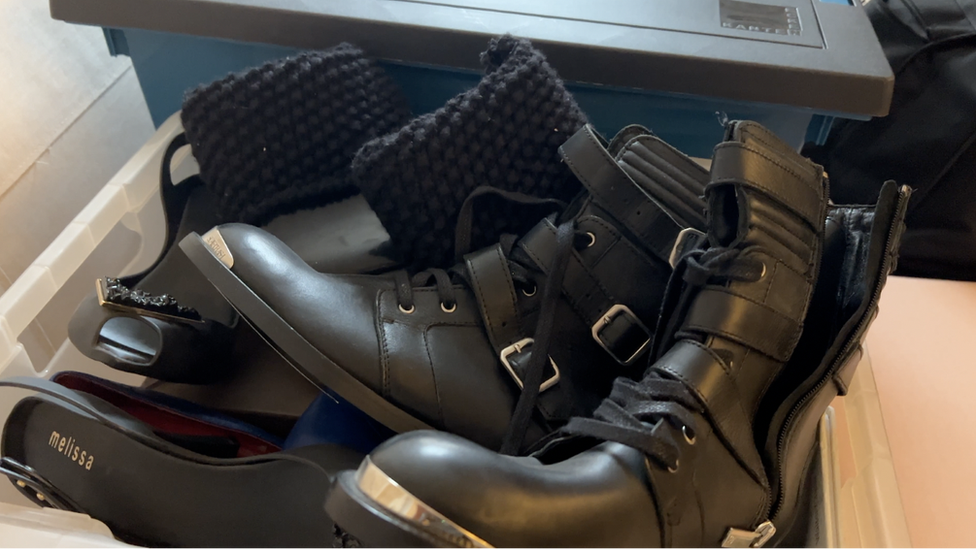
She said she has accumulated hundreds of items in the last ten years
Ms Horton has previously been approached for television programmes about hoarding but said it was an "awful" prospect.
"There's a lot of sensitivity around it, you can't just walk into a hoarder's home and clear it out," she said.
"I'm continually asked to do those programmes and they pair you up and get you to clear out each other's things, it would be awful to me, you aren't getting to the part of the problem if someone just comes in and takes it all away.
"It's important to understand where the hoarding behaviours came from."
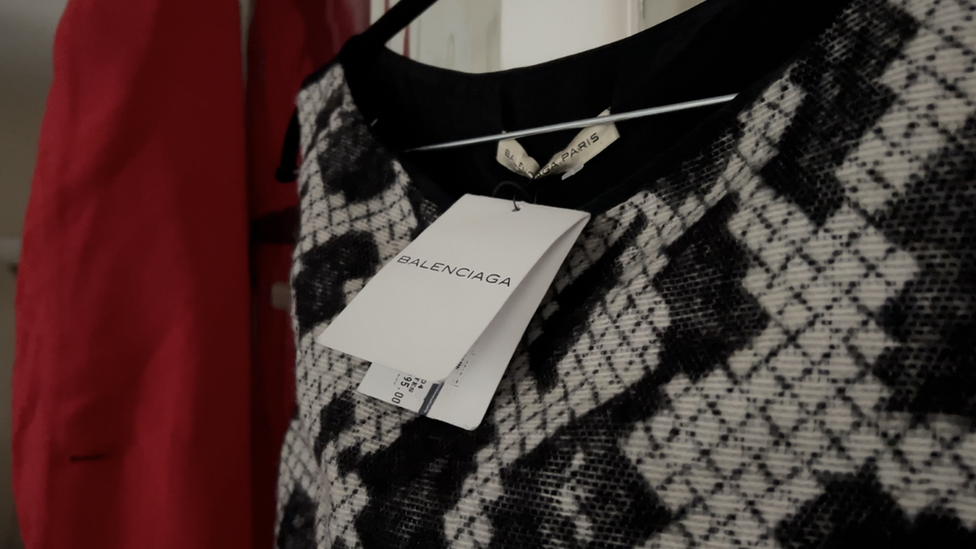
Many of the designer items have never been worn
Ms Horton has received therapy for her hoarding disorder and says she is now able to manage the behaviour.
She said: "I did go to a sample sale on my birthday, I picked up loads of things but I then put them back and went for a coffee - that was very powerful for me.
"I have stopped the way that I shop and the way that I think about purchasing and I am aware it is a knife-edge situation and things in your life can trigger it but I'm trying to put things in place so when that does happen I don't turn back to the hoarding behaviour as a coping mechanism."
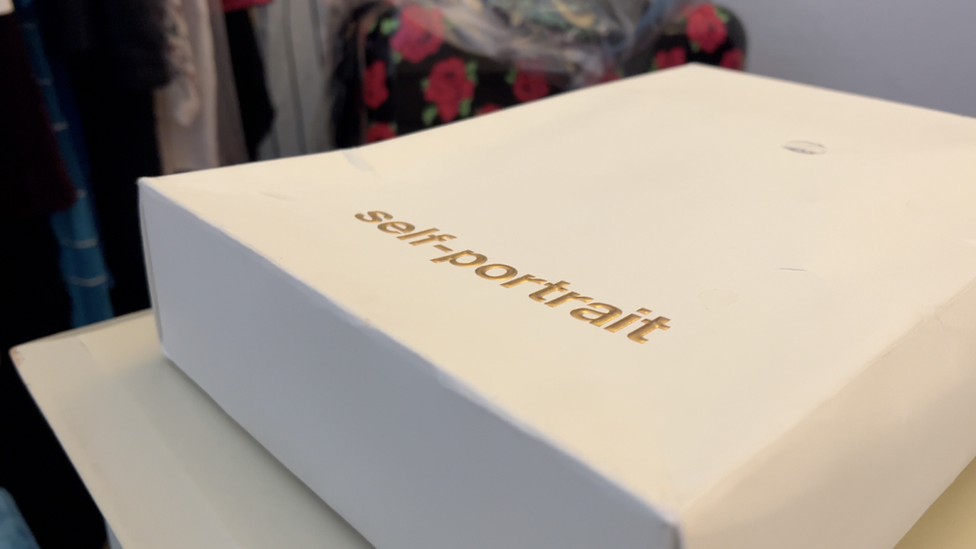
Some of the brands include those favoured by royalty
Ms Horton hopes to sell a large selection of her clothes in Plymouth on Sunday in order to make more space for writing in.
"I will have my friends and family around me, it feels like a thing that is positive and I really want that room to write in, I don't want to be sitting here freaking out about the amount of stuff I have."
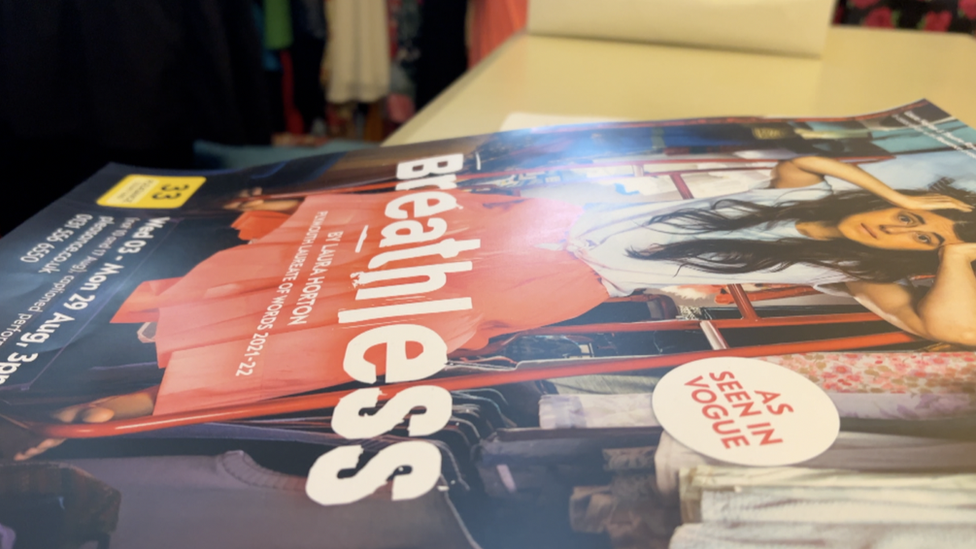
Ms Horton wrote about her experience for her award-winning play
Ms Horton made her story public when it was used for inspiration for her award-winning play, Breathless.
The show, which is set to tour in the future, will be on at the Theatre Royal Plymouth from Monday.

Follow BBC News South West on Twitter, external, Facebook, external and Instagram, external. Send your story ideas to spotlight@bbc.co.uk, external.
- Published21 May 2022

- Published16 May 2021
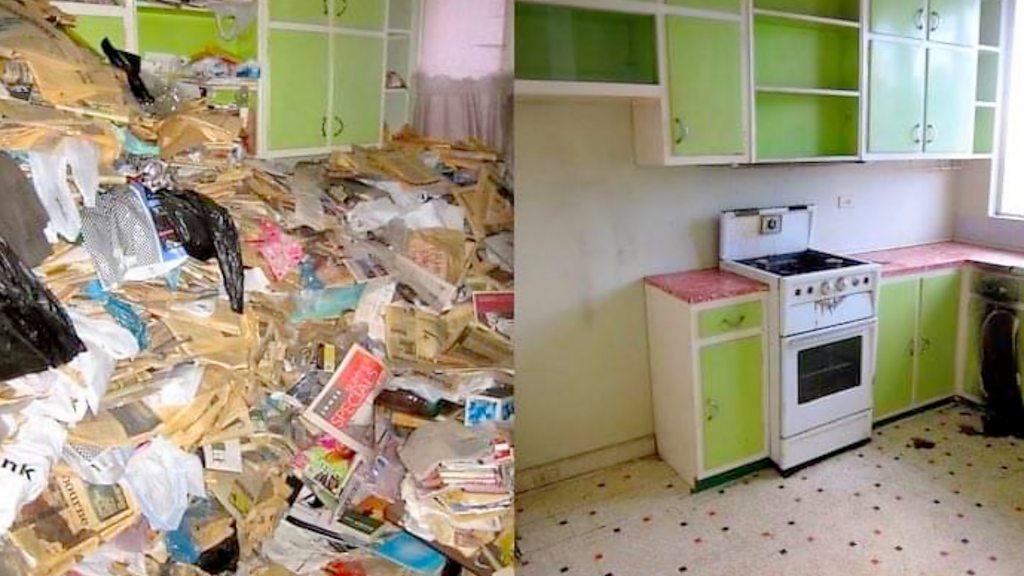
- Published9 February 2020
